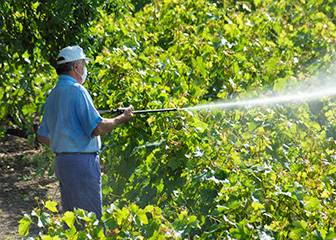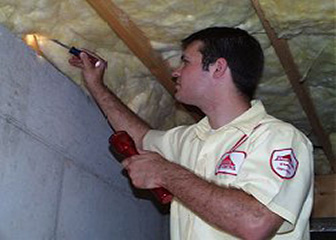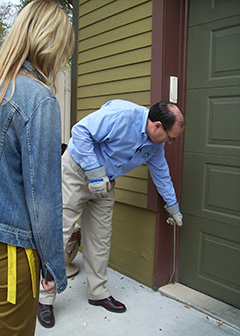Summary

| Quick Facts: Pest Control Workers | |
|---|---|
|
$30,340 per year
$14.59 per hour |
|
| High school diploma or equivalent | |
| None | |
| Moderate-term on-the-job training | |
| 68,400 | |
| 26% (Faster than average) | |
| 17,900 | |
What Pest Control Workers Do
Pest control workers control, manage, or remove unwanted creatures, such as roaches, rats, ants, termites, and bedbugs, that infest buildings and surrounding areas.
Work Environment
Pest control workers travel to clients' sites. To inspect sites and treat them, workers must often kneel, bend, and crawl in tight spaces. Because there are health risks associated with pesticide use, workers must sometimes wear protective gear, including respirators, gloves, and goggles.
How to Become a Pest Control Worker
State laws require pest control workers to be licensed. Most workers need a high school diploma and receive on-the-job training, which usually lasts less than 3 months.
Pay
The median annual wage of pest control workers was $30,340 in May 2010.
Job Outlook
Employment of pest control workers is expected to grow 26 percent from 2010 to 2020, faster than the average for all occupations. Environmental and health concerns will result in more people hiring professionals rather than trying to control pests themselves. Job opportunities should be very good.
Similar Occupations
Compare the job duties, education, job growth, and pay of pest control workers with similar occupations.
O*NET
O*NET provides comprehensive information on key characteristics of workers and occupations.
Contacts for More Information
Learn more about pest control workers by contacting these additional resources.






